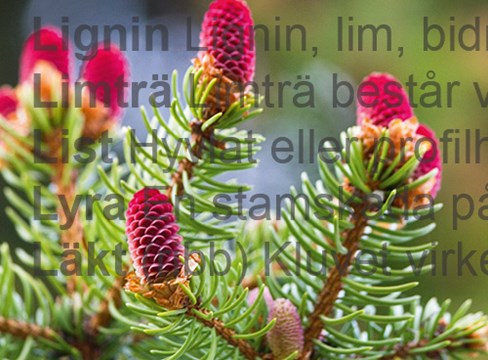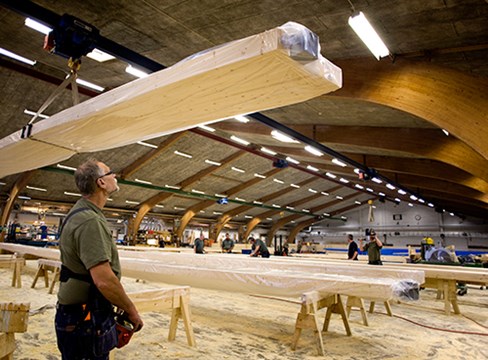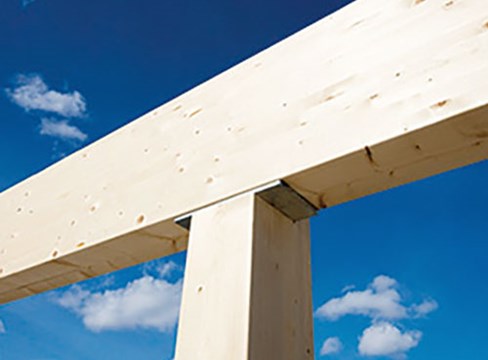Wood for the joinery industry
The joinery industry adds value to sawn timber in many different ways in quality-controlled processes. The value-adding steps described may take place anywhere in the chain, from the sawmill to the finished product leaving the joinery workshop.
The joinery industry uses wood for various purposes, including flooring, windows, doors, stairs, furniture and interior fittings. Pine is the usual choice, because it can be given a good surface finish and the heartwood provides natural resistance to rot and insects.
Wood for the joinery industry is generally sawn into thicknesses of 50, 63 or 75 mm, while the width can be 100–200 mm. Wood for windows is usually taken from the main yield in order to have a high proportion of heartwood. Sometimes the area around the pith is sawn out to give the products better dimensional stability. This is called sawing with a pith-catcher.
The original dimensions may be reduced through resawing or splitting, and can be increased by gluing together smaller pieces to form larger dimensions.
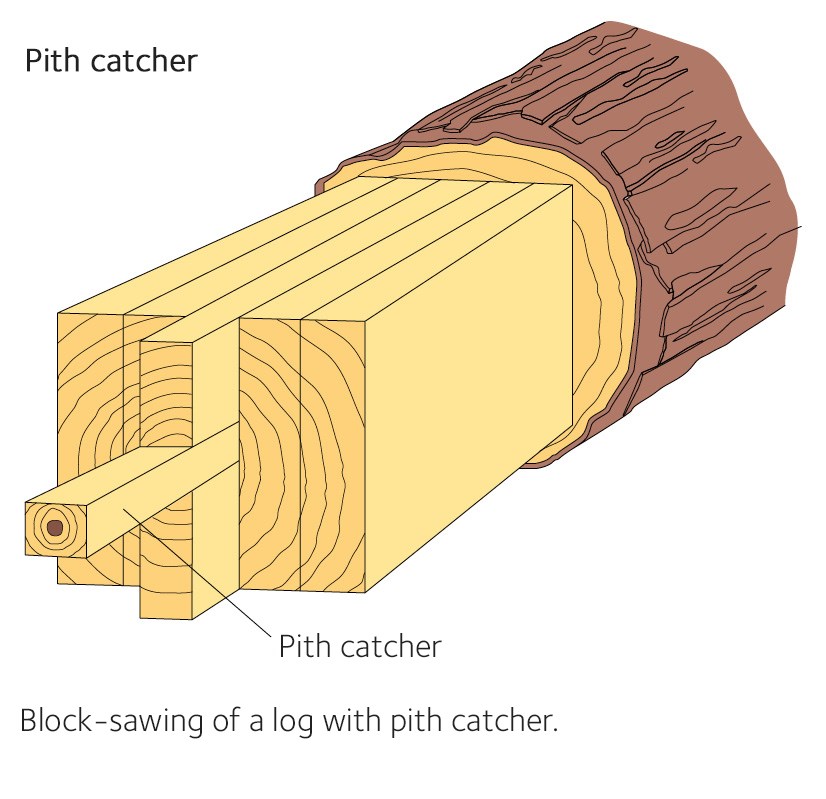
Fig. 95 Block-sawing with pith-catcher
The pith-catcher contains juvenile wood that affects deformation.
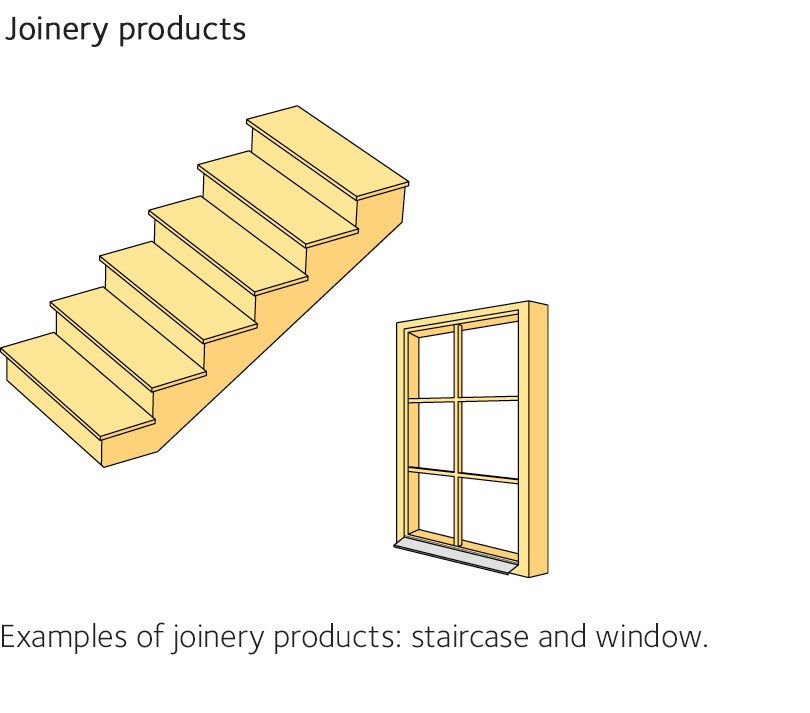
Fig. 94 Examples of joinery products
In addition, this bonding technique is used to minimise the occurrence of cracks in large dimensions, for example. Gluing pieces together can also limit changes in form such as twisting, warping and so on. This is important considering windows and doors need to fit well and be airtight.
Wood for bonded products usually makes use of sawn timber in narrow dimensions. To achieve knot-free wood, for internal window casements etc., 25 mm thick knot-free side-boards may be used, for example.
The raw material usually supplied to the joinery industry is grade G4-1 or better, with grading conducted in line with SS-EN 1611-1. Wood with only sound knots is desirable, but wood with black knots may be acceptable in some cases. Wood with knots that cannot be accepted in the finished product, such as loose knots, are drilled out and filled with a wood plug. Knots may also be removed through cutting and subsequent finger-jointing.
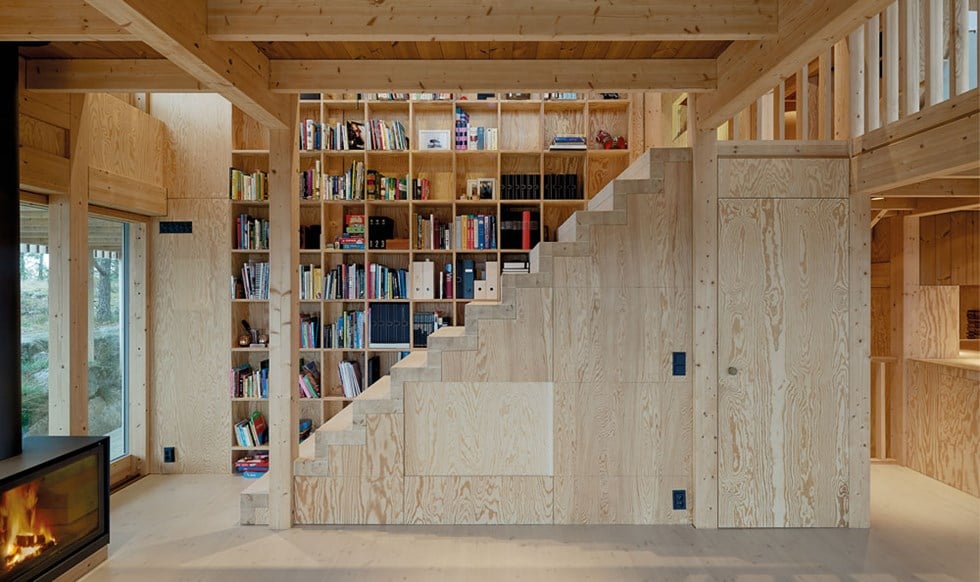
Villa Moelven, Älgö.
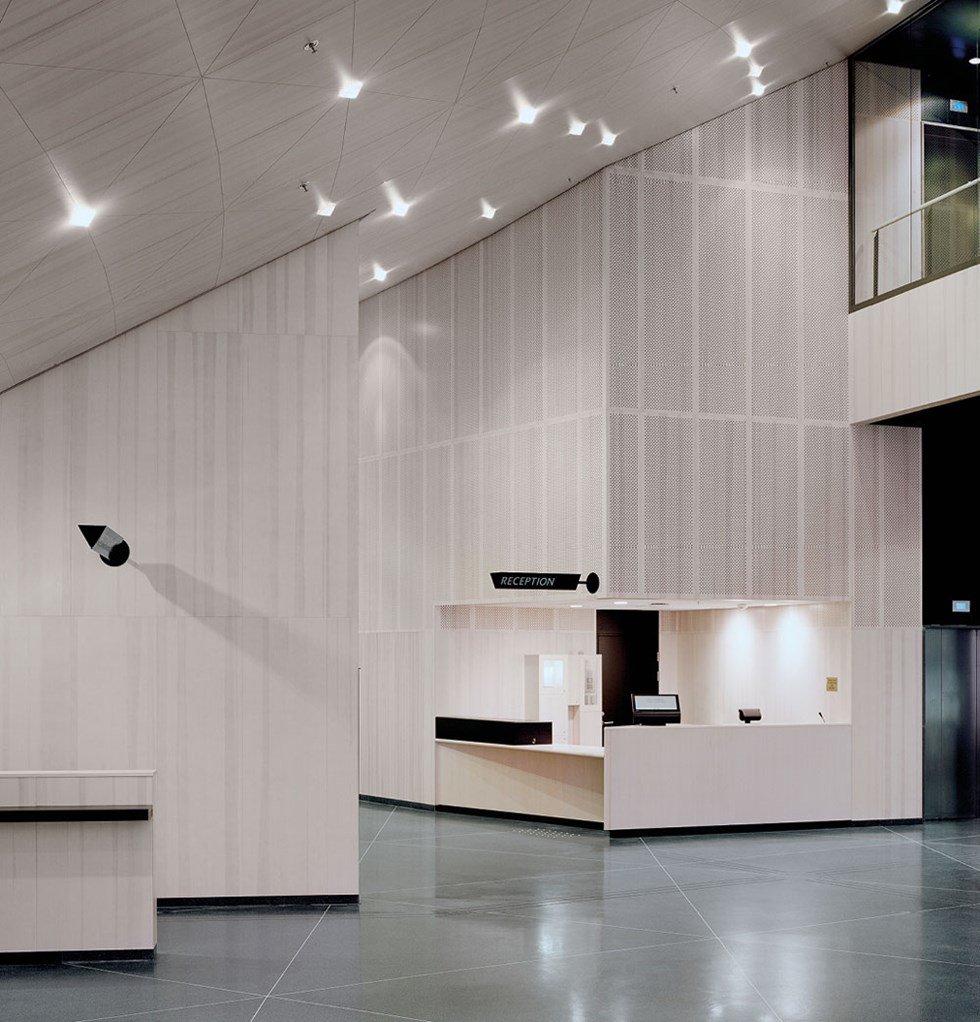
Aula Medica, Karolinska.

